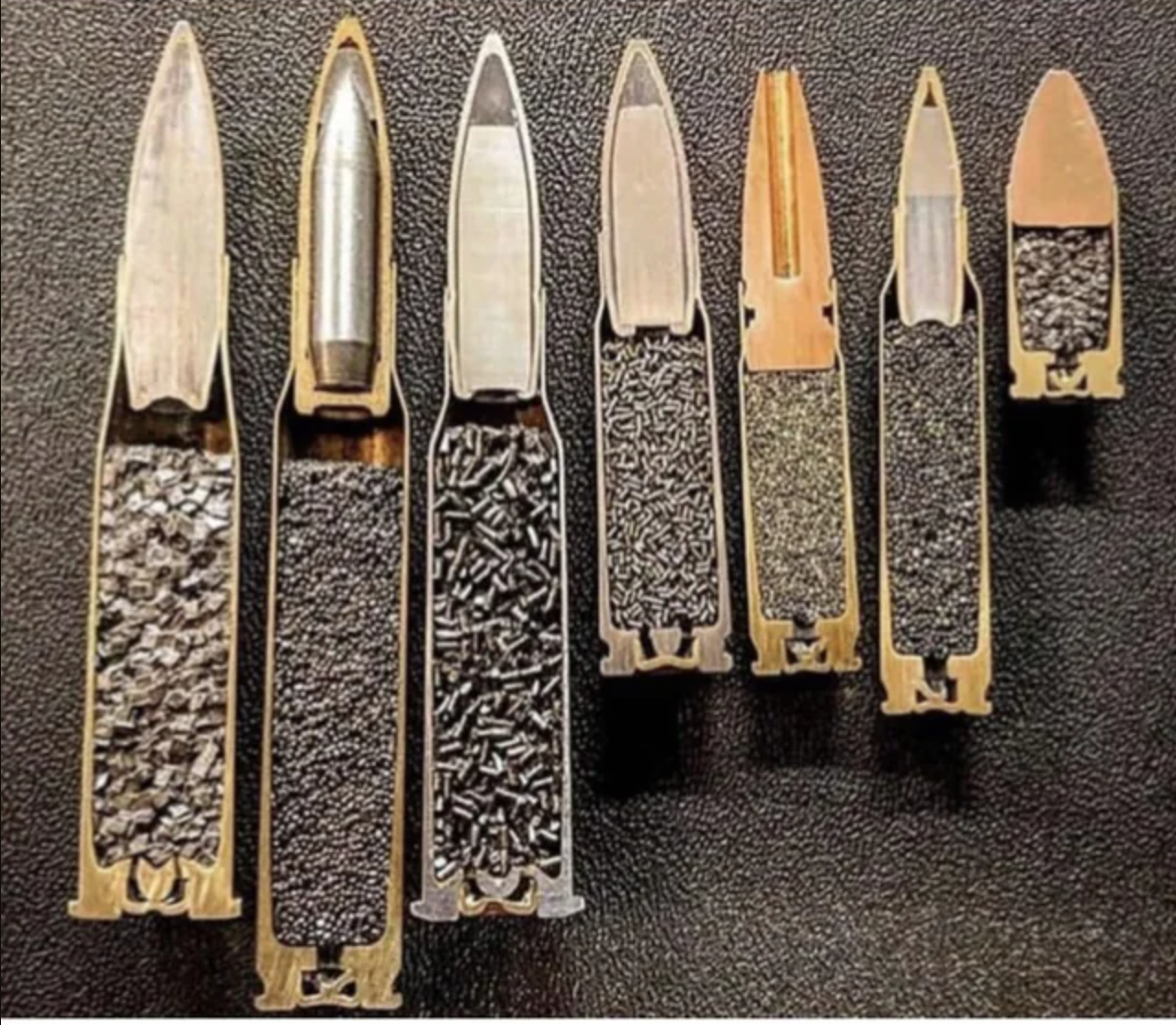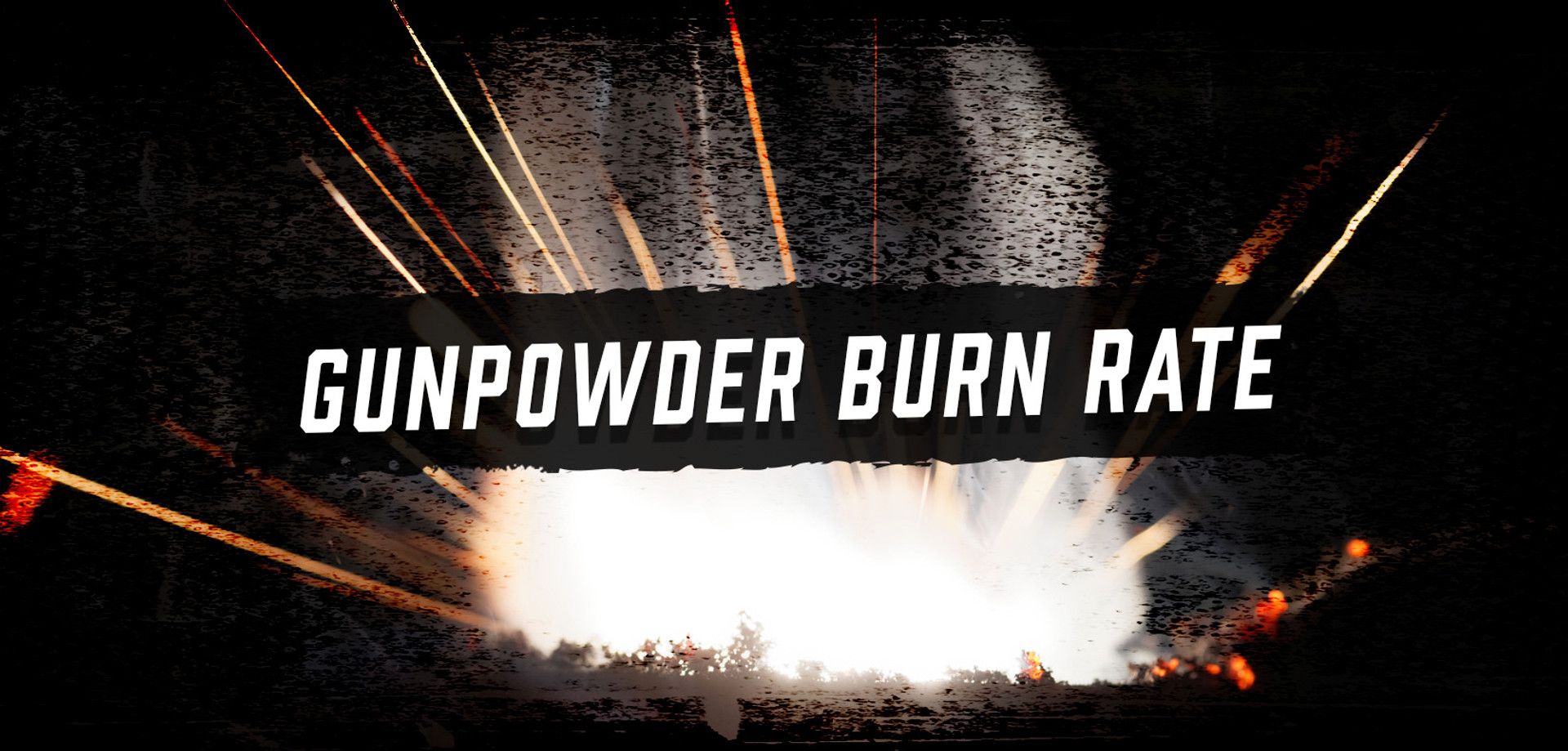Learn about gunpowder burn rate
Gunpowder is a combustible substance that has been a game-changer in modern warfare and has revolutionized the way we hunt and shoot. All shooters know it's the main component in getting your projectile downrange in order to hit your desired target. However, the world of gun powders is vast, and the leaps and bounds we have made in developing new powders over the past 150 years are absolutely astounding!
To help shooters and reloaders alike select the right powder for their needs, manufacturers produce burn rate charts and reloading charts that provide information on the burn rates of different powders. The chart typically displays the burn rate of each powder relative to other powders. Shooters can use the chart to identify powders that meet their specific needs, such as a fast-burning powder for a handgun or a slower-burning powder for a rifle.
Let's take a quick dive into the history books to see where we started with gun powder and how far it has come today.
Quick History on Gunpowder
Photo Source: Rusty Watson on Unsplash
Black powder, the predecessor to smokeless powder, was invented in China in the 9th century. It was made by mixing saltpeter (potassium nitrate), sulfur, and charcoal in specific proportions. The resulting mixture burned rapidly and produced a large amount of smoke, which made it useful for military and mining applications. Black powder was introduced to Europe in the 13th century and was used extensively in firearms until the late 19th century.
Smokeless powder was invented in the late 19th century in France. It quickly replaced black powder as the preferred propellant for firearms. The first smokeless powder was composed of nitrocellulose, which burns more cleanly than black powder and produces less smoke. Nitrocellulose was used exclusively as a propellant until the early 20th century, when nitroglycerin was added to create double-base powders. In the mid-20th century, other chemicals were added to create triple-base powders.
Despite the advancements in technology there is still a huge market for black powder and is used worldwide by hunters, re-enactors, and enthusiasts.
Now that all of the nerdy history buff info is out of the way we can take a look at what types of powders commonly found and their chemical makeup found in all of the rounds you take pride in shooting.
What is powder shape or burn rate?
Depending on the powder shape and coating, the speed at which it burns may vary. There are three common smokeless gunpowder shapes used in all modern ammunition as well as three common formulas to make those powders burn as intended. Flake, ball, and extruded powders are used by both major manufacturers and reloaders alike, each with varying burn rates that make them suitable for different applications.
Flake powders have a fast burn rate, making them suitable for light loads and small caliber handguns. They are commonly used in shotguns, which require a faster burn rate due to shotguns not being able to withstand higher pressures compared to rifles and handguns. Flake powders have thin, flat grains that burn quickly, providing a quick pressure impulse and quick burn.
Ball powders, on the other hand, have a slower burn rate - making them the preferred choice for some rifle cartridges. These powders are spherical and consist of small grains that provide a slower, more controlled burn rate depending on its coating.
Extruded powders are versatile and can be used for both small and large caliber firearms. They generally have long, cylindrical grains that burn slowly, allowing for more control and accuracy. As a result, they are ideal for long-range shooting, making them a popular choice among hunters and competitive shooters.
3 main types of gunpowder
To make a long story short, the type of powder used in a specific load depends on a number of factors - including the caliber of the firearm, the weight of the bullet, the desired velocity, and the intended use of the firearm. For example, a small-caliber handgun that is used for self-defense may use a single-base powder because it produces less recoil and can be used in a variety of weather conditions.
A larger-caliber rifle that is used for hunting may use a double-base powder because it produces more energy and can propel bullets at higher velocities. Magnum rifle that is used for long-range shooting may use a triple-base powder because it produces the most energy and can propel bullets at the highest velocities. Beyond the shape, smokeless gunpowder is divided into three main types: single-base, double-base, and triple-base powders.
To preface the information below it may not be practical to know, as referencing reputable reloading books, charts and manuals developed by reputable companies that adhere to SAAMI specs should take priority. Nonetheless, it's interesting and still good information to know. These powders are classified based on the number of chemical components that make up the propellant:
Single-base powders
Single-base powders are composed of nitrocellulose, which is the primary component in all smokeless powders. They are called "single-base" because they only contain one chemical component. Single-base powders burn quickly and produce less recoil than other types of powders, making them suitable for use in light-recoiling firearms. They are also relatively insensitive to temperature changes, which means they can be used in a variety of weather conditions. However, because they burn quickly, they produce less energy than other types of powders, which can result in lower bullet velocities and less accuracy at long ranges.
Double-base powders
Double-base powders contain a blend of nitrocellulose and nitroglycerin. They burn faster than single-base powders, but not as quickly as triple-base powders. Double-base powders are more sensitive to temperature changes than single-base powders, but less sensitive than triple-base powders. They produce more energy than single-base powders, which makes them suitable for use in larger, heavier firearms that require more energy to propel bullets at high velocities. Double-base powders also produce more recoil than single-base powders, which can make them less desirable for some shooters.
Triple-base powders
Triple-base powders contain a blend of nitrocellulose, nitroglycerin, and other chemicals. They burn more slowly than single-base and double-base powders and produce the most energy of the three types. Triple-base powders are the most sensitive to temperature changes and can be difficult to ignite in cold weather. They are typically used in high-velocity cartridges for large-caliber firearms, such as magnum rifles and large bore rifles. Triple-base powders produce the most recoil of the three types, which can make them uncomfortable for some shooters to use.
Popular Gunpowders used by reloaders
One of the most popular powders used in reloading today is Alliant Unique powder. This versatile powder can be used in a wide range of firearms and offers consistent performance. It is also clean-burning, which reduces the amount of residue left behind in the firearm. Hodgdon Clays powder is another popular choice, particularly for shotgun loads. It has a fast burn rate and produces consistent results.
Winchester 231 is a popular choice for handgun loads. It has a fast burn rate and can be used for a range of loads, from light target loads to heavy self-defense loads. Reloader 15 is another popular choice for rifle loads. It has a slower burn rate and can be used for a range of cartridges, including the .223 Remington and .308 Winchester.
For an additional free resource, check out the Discord Server: Gordons Reloading Tool which has a wide variety of different load data - providing barrel pressure, FPS, cartridge, projectile weight and it's all based off of what powder you choose to use.
What Gunpowder Suits my needs?
Choosing the right gunpowder is crucial to achieving the desired performance of your firearm. Thankfully manufacturers are extremely aware of the variance and utilize powders that fire the round at the specifications they provide. Too much powder and you lose your gun barrel, but too little and you have a squib. That's why it's important for all of the reloaders out there to be acutely aware of the differences as well.
Today's reloaders have access to a wide variety of powders that offer a range of burn rates and energy outputs, allowing them to customize their loads for specific firearms and applications. Whether you are a competitive shooter or a casual enthusiast, understanding the basics of reloading powders is a critical part of achieving accurate and consistent results.



 Back to List
Back to List